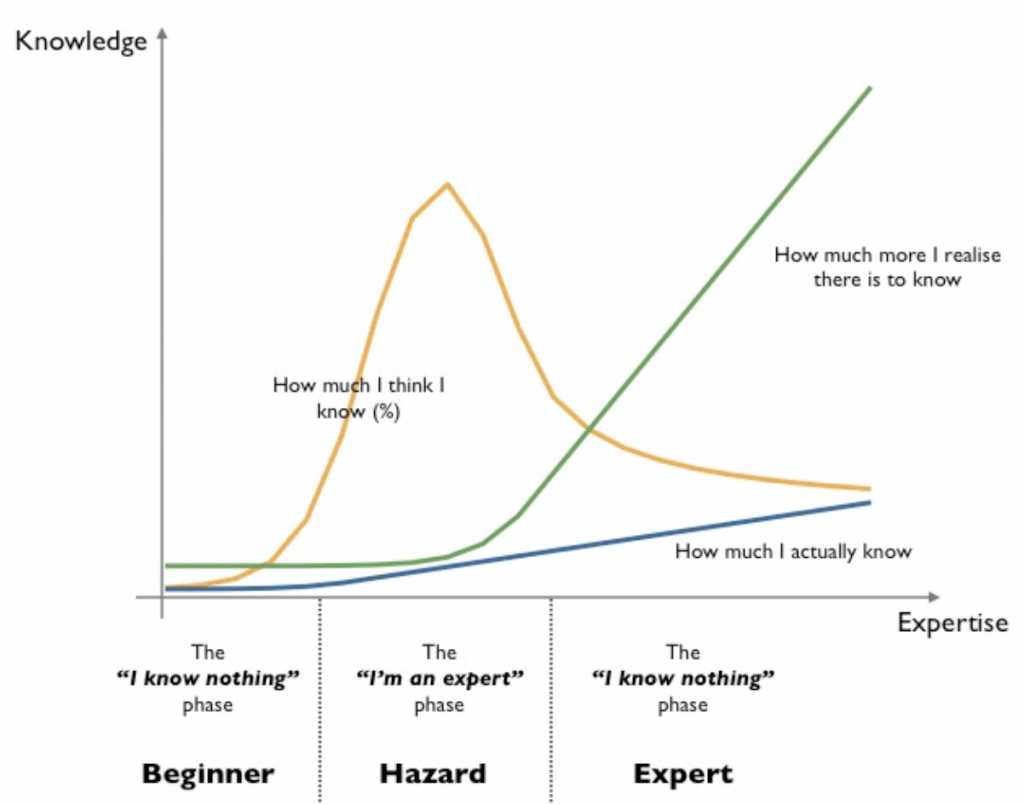written by Michael Woolcock

Half-way through my HKS course on ‘Social Institutions and Economic Development’ I host a class, usually timed to be given on the eve of spring break, on what it means to be a “development expert”, especially as it pertains to engaging with social institutions. For better or worse, I now have enough grey hair and professional visibility to often have that awkward title bestowed upon me, but while I like to think I have come to know a little about development processes, and probably know more now than I did 25 years ago, the notion of being deemed a development “expert” is a label I try to wear lightly, if I must wear it at all. In this class, I stress that technical expertise is real, rare, its application deeply necessary and consequential, and for certain kinds of development problems, exactly what you need. For other kinds of development problems, however – and certainly the bulk of those problems associated with building state capability – routinely prioritizing the singular deployment of a narrow form of technical expertise as the optimal solution is itself part of the problem (in the sense articulated in the “Solutions when the solution is the problem” paper I wrote with Lant Pritchett back in 2004).
These days, my preferred metaphorical, ideal-type juxtaposition is between expertise that fills a space and expertise that creates and protects space; this distinction roughly corresponds to, respectively, Theory X and Y in the management literature (as famously articulated by Douglas McGregor in 1960). I like this distinction expressed in the terms of ‘filling’ versus ‘protecting’ space because it broadly reflects the different skills and sensibilities that, to me, are so readily on display in development decision-making – whether in the board room, the online seminar, the policy forum, the diplomatic table, or the village meeting hall. The space-fillers primarily perceive their job, and their kindred colleagues’ job, as one of “controlling” (empirically, epistemologically, managerially) the extraneous “noisy” factors intruding on the space they’ve carefully “identified” so that, into this space, their particular, somewhere-verified “solution” can be deftly but decisively inserted. It’s what Atul Gawande calls the savior doctor model, in which one provides “a definitive intervention at a critical moment… with a clear, calculable, frequently transformative outcome.” I’ve checked the key indicators (‘vital signs’), asked my go-to questions, diligently eliminated various possibilities; I’ve scanned the decision-tree as I understand it, and determined that the highest-probability solution to this problem is X. The faster and more “cleanly” I can do this, the more genuinely ‘expert’ (and efficient and effective) I believe myself to be. Providing such decisive input into this space is emotionally thrilling; it vindicates all my years of elite education and hard work, pays me real money, yields the tantalizing allure of future successes at grander scales with higher stakes, and bestows upon me tangible professional accolades and high social status. Like nature, I abhor a vacuum, so I’ve confidently stepped in where the “less rigorous” fear to tread. I’m trained and socialized to think counterfactually, so I can’t help but indulge my vainglorious ceteris paribus fantasy that, but for my presence at that moment, things would have turned out so differently… Heck, I’ve changed history!
To be clear: if it’s your child’s life on the line requiring such a technical diagnosis and response, you would do whatever it takes to get that expertise; delivering that expertise under ‘stress test’ pressure is itself a crucial skill; vital stuff happens in “the room where it happened.” And if we’re honest, most of us quite like being in that room. (But since I’ve just invoked Hamilton, I’ll add that I think an under-appreciated virtue of that wonderful musical is its recognition that, as one astute reviewer put it, “After you’ve turned the world upside down, you have to figure out what comes next. You have to figure out your laws, your economy, your foreign policy. You also have to figure out who matters, who makes the rules, and – maybe most importantly – who tells the story. Every culture war is about who gets to define the terms and control the narrative, and that’s no different now than it was in 2016 or 1812 or 1776.”)
The skills and sensibilities of Theory Y (or ‘Route Y’, as Dan Honig cleverly calls its applications in development practice) are really different but equally necessary – for creating and protecting space for informed, inclusive deliberation; for promoting more equitable contests; for enabling good struggles. In this space, infused with and guided by some minimally-but-locally legitimate processes, parties seek to find, implement, and uphold specificsolutions to the complex challenges associated with wrenching social change, bridging wide disagreement, negotiating reasonable differences, and resolving risible dissent. Call it the faithful social worker model (full disclosure – my mother and one of my sisters were social workers): I may have seen versions of this vexing problem before, but ultimately each one is different in ways neither I nor (most likely) anyone else can or could fully anticipate; if there’s any decision-tree (or trees?), it’s one I’ve painstakingly assembled on the basis of hard-won experience and yet it may be quite different from that of others. For example, I can only hope that my decision to remove these kids from their family – one I’ve deemed sufficiently “dysfunctional” – is somehow going to be ‘better’ for all of them; but even if this particular intervention ‘works’ in the short-run I don’t really know what the long-term outcomes for them will be. Making and enacting such decisions is deeply contingent and emotionally fraught – at best I’ve made a horrible situation slightly less horrible, at worst I’ve amplified and perpetuated the awfulness: at the outset, it’s not clear which outcome will prevail, what timeframe or trajectory it will take to get there, and what collateral effects it will generate along the way. There is no clear “counterfactual.” My education gave me a few useful professional principles to guide my actions and helped me understand the legal/administrative terrain I was about to enter, but nothing could truly simulate or anticipate the complexity, uncertainty, idiosyncrasy, and paralyzing stress associated with each case I find myself addressing. For doing and dealing with all this, I get paid a pittance; few accord me any serious professional respect (whether neighbors, random strangers I meet on airplanes, or long-standing friends at high school reunions); I get the blame if outcomes ‘fail’ but no credit if they ‘succeed’; my efforts mostly feel like a garden hose confronting an inferno; ‘lessons learned’ are never actually learned by the organizations I work for; and if I move to another state, let alone another country, my knowledge and certifications will have to be acquired all over again. So I’m stuck; I do my best ‘here’ but no-one else ‘there’ really knows or cares.
People way braver, stronger, and more persistent than me sign up for entire careers that often look and feel like this latter world (e.g., middle-school teachers, inner-city police officers, youth workers, in-home nursing assistants); much development work, I suggest, also looks a lot like this. Of course, we need both of these approaches – skills and sensibilities that fill space and those that create/protect space – and various combinations thereof. But our prevailing high-modern administrative systems, political imperatives, professional structures, and career incentives are just deeply stacked in favor of doing X over Y. (One interpretation of the movie I, Daniel Blake is that it powerfully conveys how enduring and pervasive complex implementation issues are in rich countries, let alone poor ones.) These administrative proclivities are now reinforced by the rise of methodological approaches to development research and evaluation seeking and providing ready-made, narrowly-verified “solutions” (no matter how niche or small), whose seductive overtures only have ever-greater traction in a world in which the once-broad policy objective of seeking national ‘development’ has, in the aftermath of the Cold War, been steadily weakened geo-politically or deemed passe.
What to do? In our own nerdy way, advocates for Y-type work, such as champions of PDIA, need to deploy both X and Y approaches if we are to create and protect the space for Y-type work in development generally, and in state capability efforts in particular. In short: if we’re right, we should practice what we preach; but also if we’re right, we will have no illusions about how long, hard, and uncertain this work will be, and recognize that everyone in development needs to somehow create a space for valuing, cultivating, protecting, and integrating very different forms of “expertise”. (And for supporting the boring unseen work of prevention as much as the visibly spectacular work of ‘cure’.) In the solution space for complex policy problems in development, perpetuating monopolies that decide what counts as a question and what counts as an answer is as insidiously counterproductive as it is in markets for goods and services.
